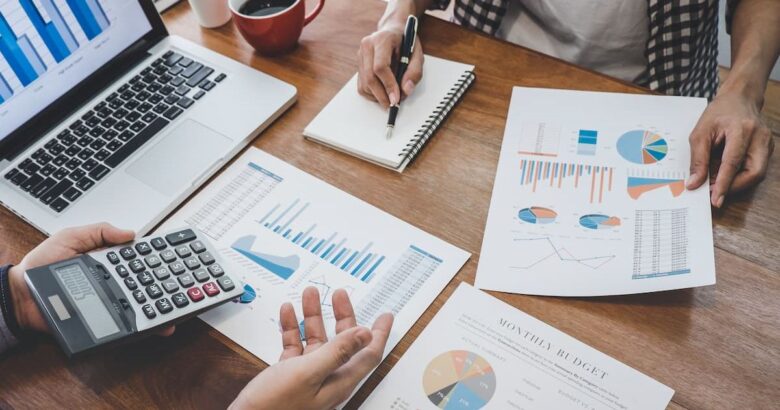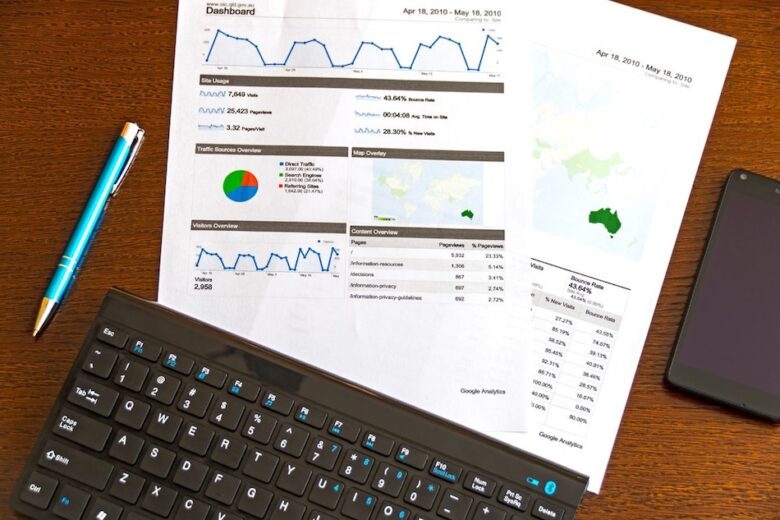There is a lot of confusion about the difference between business analytics and data analytics, as the two terms are often used interchangeably. However, there are some key differences between them. In this blog post, we will discuss the differences between them and explain why it is important for your company to understand them.
What is Business Analytics?
Business analytics is the process of using data to make informed business decisions. It involves taking data from a variety of sources and turning it into actionable insights that can help you improve your business performance. Business analytics can be used to track key metrics, identify trends, and diagnose problems.
An example of business analytics would be something like A/B testing. A/B testing is a technique that uses data to compare two versions of a web page or app to see which one performs better. By comparing the data from the two versions, you can make informed decisions about which version to keep and which version to discard.
In this example, the data is used to make a business decision. The goal of A/B testing is to improve the performance of the website or app, and the data collected from the test can be used to achieve that goal. For example, you might try two different headlines to see which one gets more clicks. For more information on ways, you can do this, visit here.
However, there are plenty of ways you could go about this. Business analytics practices include things like market research, customer segmentation, and financial analysis. Each of these practices uses data to help a business make better decisions.
What is Data Analytics?

Data analytics is the process of extracting insights from data. It involves analyzing data to find patterns and correlations and then using these findings to make decisions about how to improve your business. Data analytics can be used to track key metrics, identify trends, and diagnose problems.
There are several processes you’ll find under the data analytics bracket, including;
- Data mining: This is the process of extracting valuable information from data.
- Data visualization: This is the process of creating visual representations of data.
- Statistical analysis: This is the process of using statistical methods to analyze data.
- Predictive modeling: This is the process of using predictive models to make decisions about future events.
- Predictive analytics: This is the process of using analytics to make predictions about future events using data.
- Machine learning: This is the process of using algorithms to learn from data, getting better and more efficient over time. For example, a machine learning algorithm could be used to automatically detect fraud.
- Big data analytics: This is the process of analyzing large data sets to find patterns and insights. An example of this would be analyzing social media data from accounts with those of followers and a ton of data to understand consumer behavior to then make decisions moving forward.
- Text mining: This is the process of extracting information from text data. For example, you could use text mining to analyze customer reviews to understand what people are saying about your product.
The Differences Between Business Analytics and Data Analytics

So what are the differences between business analytics and data analytics? The main difference is that business analytics focuses on making decisions, while data analytics focuses on extracting insights. Business analytics uses data to answer questions like “What should we do next?” or “How can we improve our sales?” Data analytics uses data to answer questions like “What is happening?” or “Why did this happen?”
Another difference is that business analytics is focused on the present and future, while data analytics is focused on the past. Business analytics looks at data to see what is happening now and what might happen in the future. Data analytics looks at data to see what has happened in the past. This difference is due to the fact that business analytics uses predictive analytics, while data analytics uses descriptive analytics.
The final difference between business analytics and data analytics is that business analytics is more strategic, while data analytics is more tactical. Business analytics looks at the big picture and develops plans to improve the business. Data analytics looks at specific problems and tries to find solutions for them.
Why It Is Important for Your Company to Understand the Differences

It is important for your company to understand the differences between business analytics and data analytics because it will help you make better decisions about how to use data. If you are only using data analytics, you are missing out on some valuable insights that can help improve your business performance. And if you are only using business analytics, you are not taking advantage of the power of data analytics.
By understanding the differences between business analytics and data analytics, you can develop a data strategy that meets your specific needs. You can use business analytics to track key metrics and make decisions about what to do next. And you can use data analytics to extract insights from your data and solve specific problems.
How to Get Started with Business or Data Analytics

If you want to start using business or data analytics, there are a few things you can do. First, you need to understand the difference between business analytics and data analytics. Once you understand the differences, you can decide which one is right for your company.
Then, you need to look at the kind of problem you’re facing. If you need to make decisions about the future, then business analytics is the right tool for you. If you need to understand what happened in the past or why something happened, then data analytics is the right tool for you.
Finally, you need to learn how to use business or data analytics. There are a lot of different tools and techniques that you can use, and it can be a lot of information to take in. You don’t need to learn everything at once. Just start with the basics and work your way up.
The bottom line is that business analytics and data analytics are two different tools that can both be used to improve your company’s performance. By understanding the differences between them, you can make better decisions about how to use data. And by learning how to use both business and data analytics, you can get the most out of your data.
Summary
In this blog post, we have discussed the differences between business analytics and data analytics. We have also explained why it is important for your company to understand these differences. By understanding the differences between these two types of data analysis, you can develop a data strategy that meets your specific needs.
As you can see, understanding the differences between business analytics and data analytics is essential for making the most of your data, therefore directly contributing to the success of your business.
What’s more, if you’re not using your analytics properly, and your competitors are, then they’re automatically going to get ahead of you, and it’s down to you to ensure this doesn’t happen!


